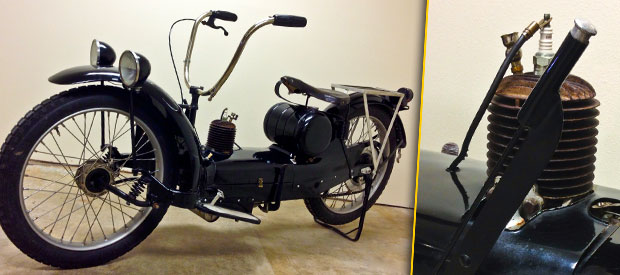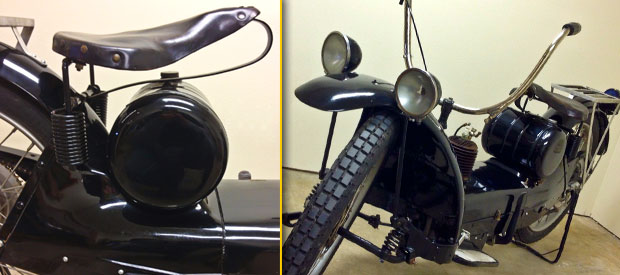Around 1919, seeking to make a two-wheeled vehicle with steering and seating position similar to a car, Carl Neracher (Ner-A-Car) of Syracuse, New York made several models over time, two-stroke and four-stroke powered with three speed and variable transmissions.
With the handlebar well aft of the wheel, center hub steering was employed, a system also found on the New York made Militaire of about 1915. A variable speed drive, the flywheel and a large large drive wheel acting on each other, allowed smooth “shifting”, a CVT 100 years ago. The step through monocoque body design, similar to the design some scooters employ, along with a low seat height, made it easy to climb onto the Ner-A-Car.
Low interest in America brought Neracher to license a British firm to manufacture the Ner-A-Car, later the machines were made in Syracuse, New York. A few years into production a three-speed Sturmey-Archer transmission and a 350cc Blackburne side-valve engine was used, followed by an OHV model in 1925.
In 1922 eight years after setting his 1914 coast to coast record of 11.5 days on an Indian, Cannonball Baker went New York to Los Angeles in just 8 days riding a Ner-A-Car.
- Two-Stroke Vertical Single
- Bore & Stroke: 2.5” X 2.75”
- 221 cc Displacement
- Binks Carburetor
- 2.5 Horsepower
- Variable Speed Transmission
- Kick Starting
- Chain Primary and Final Drive
- Pressed Steel Frame
- Center Hub Steering
- Swingarm Rear Suspension
- Wheels/Tires: 3.00” X 26”
- Internal Expanding Brakes
- 59 Inch Wheelbase



Leave a Reply
Want to join the discussion?Feel free to contribute!